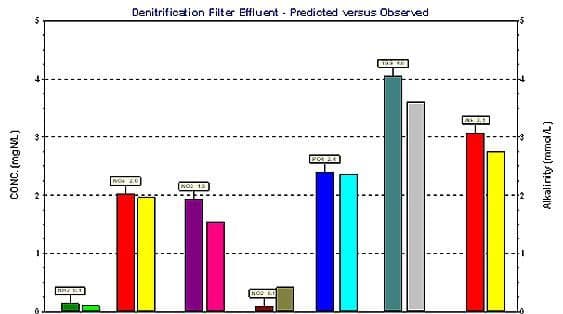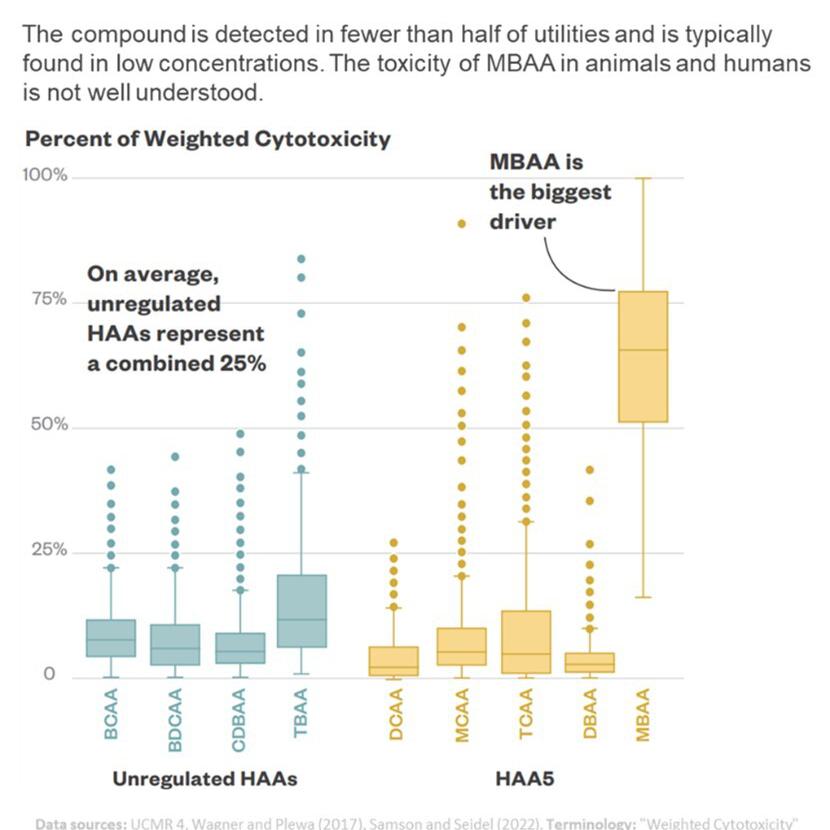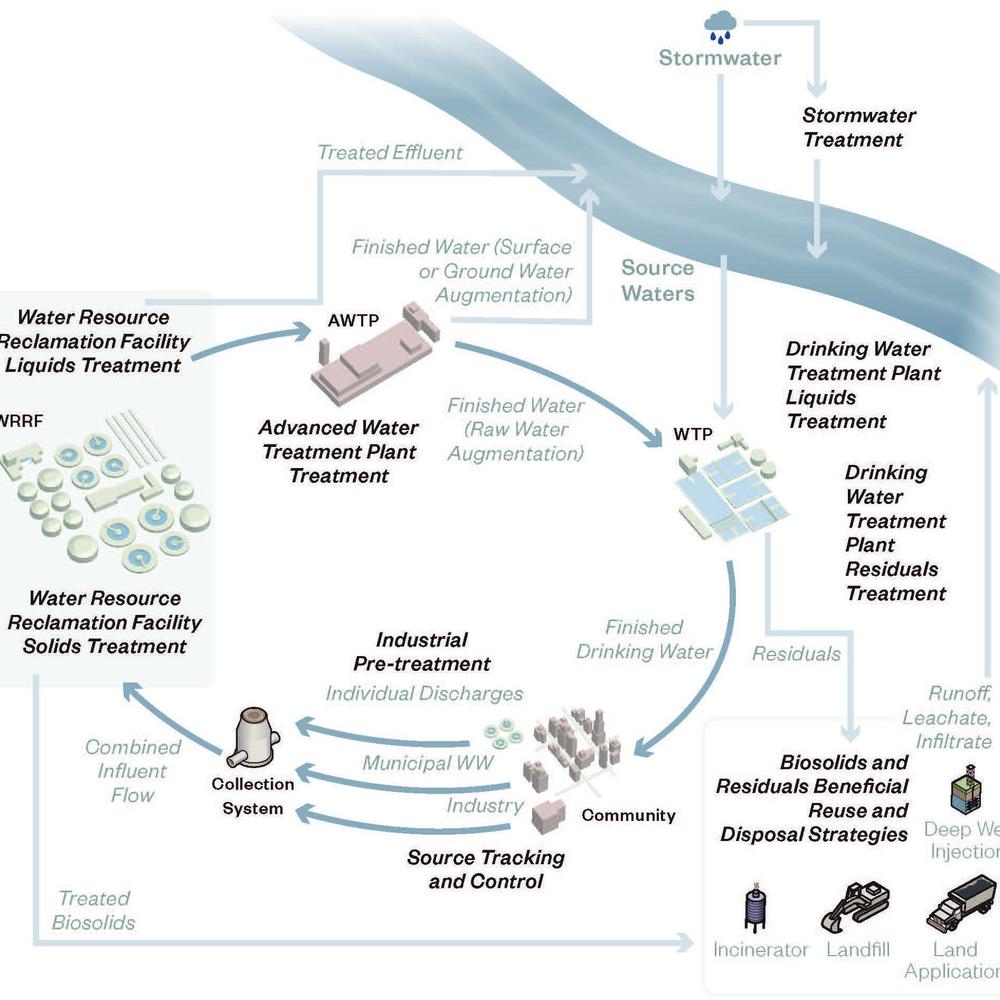Performance and Modeling of Glycerin-fed Denitrification Filters
Katya Bilyk, Ron Latimer, Paul Pitt - Hazen and Sawyer; Samuel Ledwell, Malcolm Fabiyi - Environmental Operating Solutions; Imre Takacs, Peter Dold - Envirosim; Greg Farmer - City of Englewood, Colorado
Last Modified Sep 22, 2022
Denitrification filters often are applied to remove nitrate from nitrified effluents to low levels. Several variables affect filter performance including hydraulic loading rate (HLR), influent dissolved oxygen (DO) concentration, carbon dose (typically methanol), temperature, and nitrate loading rate (NLR). Traditional design methods for sizing these units have relied on HLR or NLR as a proxy for the more complex system of variables. These additional parameters are included in a biofilm-based model (BioWin™ v 3.0) that allows a more accurate assessment of the expected efficiency of deep-bed denitrification filters.
In a related matter, wastewater treatment plants are looking for safer and more sustainable carbon alternatives to methanol. Most full-scale pilot studies have found glycerin to be a viable alternative to methanol; however, the majority of these studies have focused on glycerin addition to an anoxic zone in an activated sludge process as opposed to denitrification filters.
The results of a detailed side-by-side pilot of glycerin (MicroCglycerin™), methanol, and control (no carbon addition) on denitrification filters at the Littleton-Englewood Wastewater Treatment Plant (LEWWTP) offered a unique opportunity to evaluate and model filter performance with glycerin
Objective
The objectives of this investigation were as follows: (1) Utilize the BioWin fixed-film element, adapted for denitrification filter technology (Bilyk et al., 2008), to simulate the performance of the LEWWTP denitrification filters. (2) Determine the effectiveness of glycerin on the operation of a tertiary effluent deep-bed biological denitrification process. (3) Determine the operational parameters that could be optimized to enhance the capacity of deep-bed filters to handle non-methanol carbon substrates.
Project Approach
This evaluation took place at the LEWWTP, a 50 MGD facility that discharges into the South Platte River in Colorado. Process upgrades were completed in December 2008, and include new TETRA® deep-bed denitrification filters for biological nutrient removal. The facility also has daily TIN limits that range from 23 to 48 mg/L. The plant has eight, individually fed deep-bed denitrification gravity filters. Up to six filters are usually operated in denitrification mode with carbon feed, while the remaining filters are operated in filter mode only. One of the filters in denitrification mode was fed with MicroCglycerin™, while the other methanol fed filters provided a comparative basis for evaluating the results. The backwash scheme to each filter could be individually controlled. Average influent NO3-N to the filters was 20 mg/L.
Results and Discussion
The BioWin fixed-film element, was calibrated to average performance of the LEWWTP denitrification filter pilot with glycerin addition (Figure 1). Dynamic simulations are planned.
Related Topics:

The MicroCglycerin™ fed system performed comparably to the methanol-fed filters with regard to nitrogen removal (Table 1). The COD:N ratios for both methanol and glycerin were higher than the stoichiometric values, presumably due to the high influent DO concentration of 5 mg/L.

With regard to optimization of glycerin-fed denitrification filters , extending the backwash duration was sufficient to restore good solids control within the system. Investigation of the microbial composition in the interstitial suspended solids layer showed some overlap in the species present in the backwash liquid for both systems, but also noticeable differences.
References
Bilyk, Katya, Imre Takacs, Peter Dold, Paul Pitt, and Ron Latimer. “Full-Scale Dynamic Testing Advances Fundamental Understanding of Denitrification Filters.” WEFTEC Conference Proceedings 2008.










